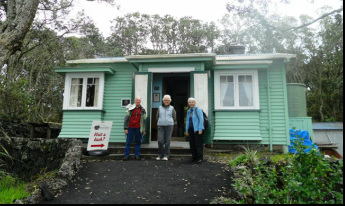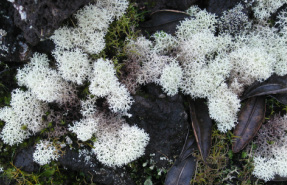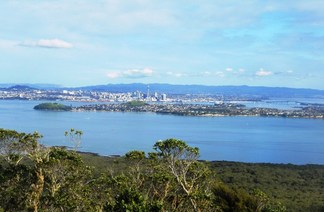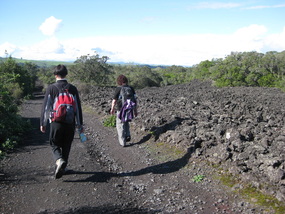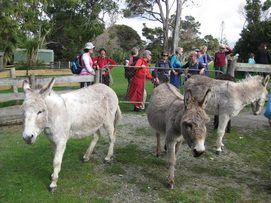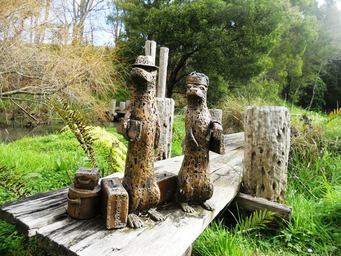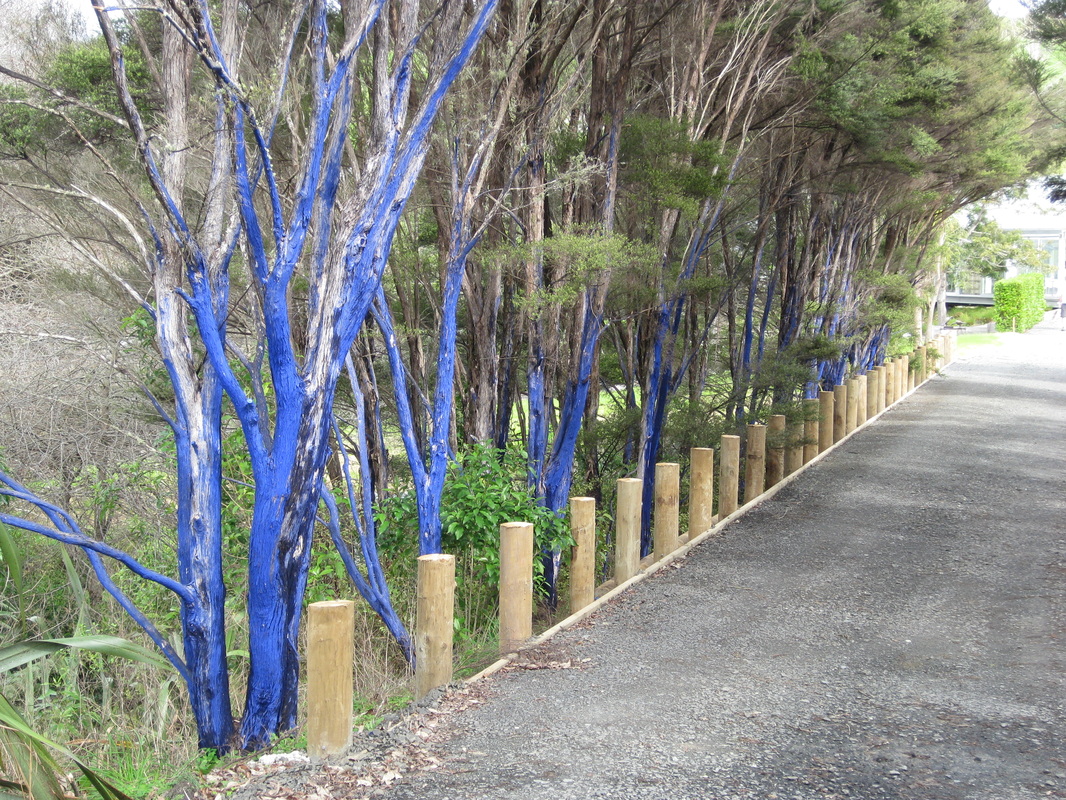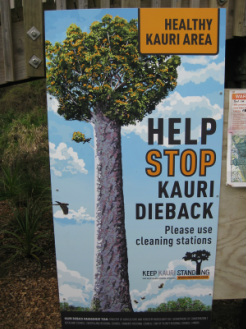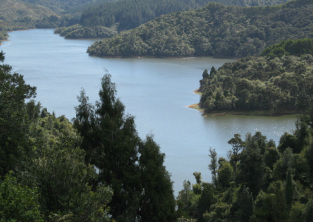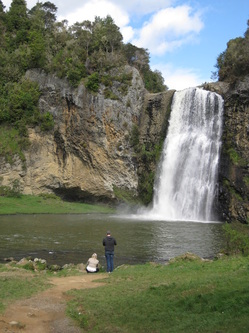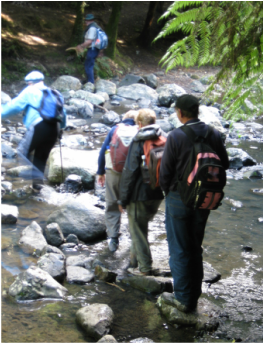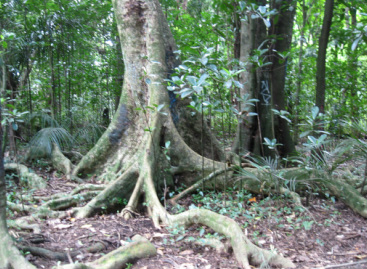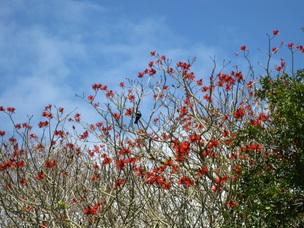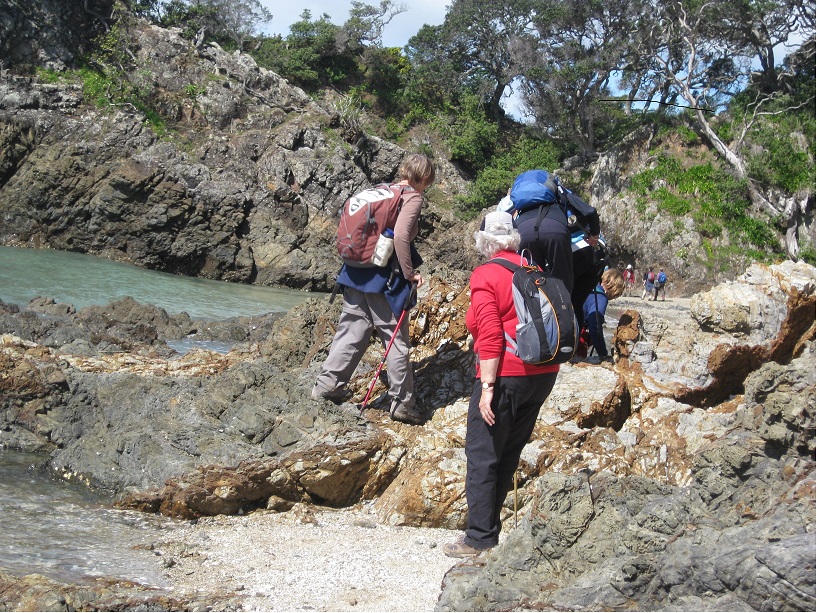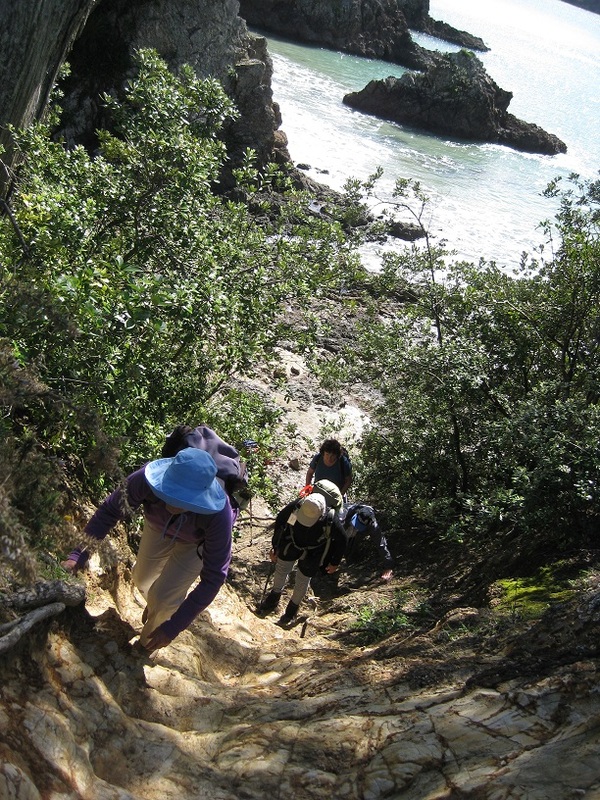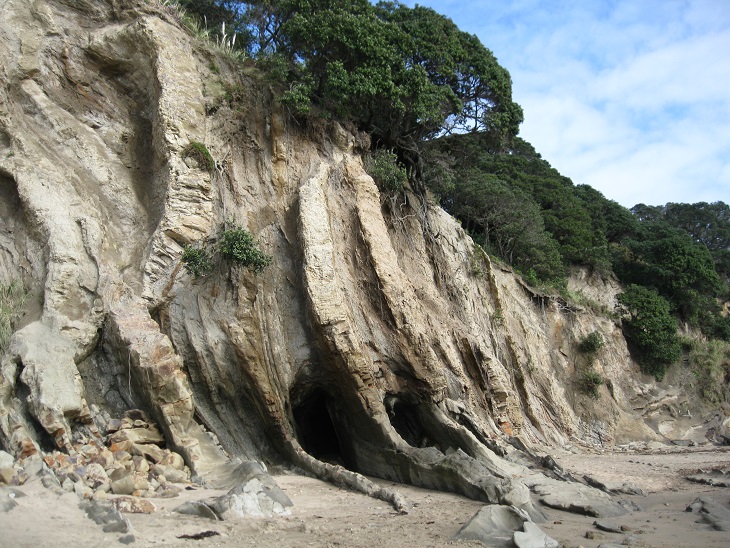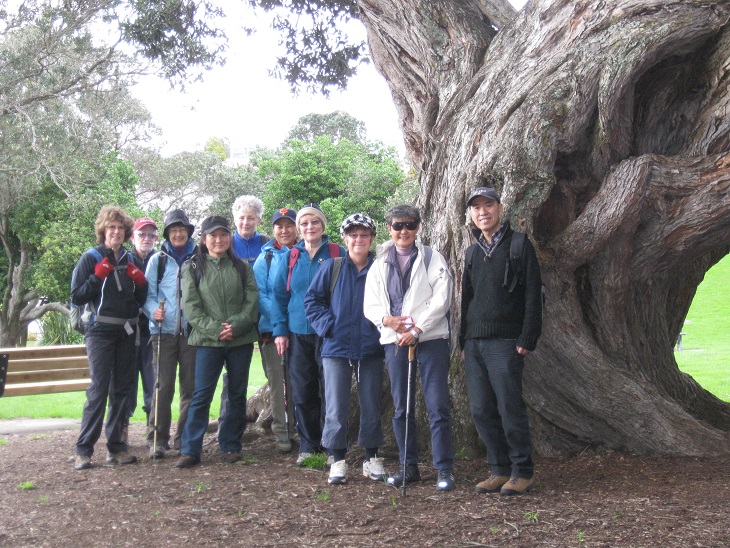Trip Reports, August - September 2013
Rangitoto Island
04 August
Despite a grey sky and light drizzle, 23 keen people caught the 9.15am ferry to Rangitoto Island. On arrival we were treated to a tour of Bach 38 which was built in 1927, and has been lovingly restored and furnished (including the grocery items in the kitchen cupboards) by the Rangitoto Island Historic Conservation Trust.
We then walked up the Summit Track with stops to read information boards about the volcanic history of Rangitoto and the subsequent regeneration of the native bush. The sun broke through the cloud and the temperature rose rapidly necessitating further stops to divest ourselves of layers of clothing.
On reaching the summit we had lunch and took in the wonderful 360 degree views, back to Auckland City and out to the Coromandel Peninsula. After lunch (and a bonus sighting of some saddlebacks in the bushes), the B group returned down the Summit Track and the A group went via the boardwalk to the Summit Road and along the Islington Bay Road which was built by prisoners from Mt Eden prison between 1926 and 1933.
A short rest and then a gentle stroll past some other quaint baches which have been retained on the island and through the Kidney Fern Grove before our tired but contented group caught the ferry back to Auckland City.
Thanks to Molly and Sharleen for organising the day.
We then walked up the Summit Track with stops to read information boards about the volcanic history of Rangitoto and the subsequent regeneration of the native bush. The sun broke through the cloud and the temperature rose rapidly necessitating further stops to divest ourselves of layers of clothing.
On reaching the summit we had lunch and took in the wonderful 360 degree views, back to Auckland City and out to the Coromandel Peninsula. After lunch (and a bonus sighting of some saddlebacks in the bushes), the B group returned down the Summit Track and the A group went via the boardwalk to the Summit Road and along the Islington Bay Road which was built by prisoners from Mt Eden prison between 1926 and 1933.
A short rest and then a gentle stroll past some other quaint baches which have been retained on the island and through the Kidney Fern Grove before our tired but contented group caught the ferry back to Auckland City.
Thanks to Molly and Sharleen for organising the day.
|
Hunua Falls and Cosseys Dam
01 September
There's nothing like a walk in the Hunua Ranges on a sunny day. Beautiful bush ,a sparkling waterfall, birdsong and good company! We split into two groups, those who were happy to make the climb up the Massey Track with its steps and onto the Wairoa Cossey Track leading to Cossey's Reservoir, and those who wanted a shorter walk. Those who made the climb were rewarded with amazing views before we descended to the dam for lunch. What a great picnic spot, for once there were seats for everyone! We spotted a pair of friendly chaffinches on the bank of the reservoir and later on a tui turning itself inside out and upside down feeding on nectar on an early flowering kowhai tree. It was great to see lots of people out enjoying the bush, including one athletic (and topless) young man who came hurtling uphill from out of the blue startling the ladies! Nancy gave us all a short lesson in how to identify species of fern by their spores not by what the leaves look like so we are all a little bit more knowledgeable now. There was time to admire the water spilling over Hunua Falls (and a family of ducklings bobbing about in the water) before we headed off back via Papakura. Here we had an impromptu walk through Kirks Bush, a fine reserve featuring some majestic native trees, kauri, rimu, taraire and puriri to name a few. We were sad to see that unfortunately most of the trees by the walkway have fallen victim to taggers and it is not difficult to feel very angry that there are people out there who think it is OK to disfigure trees like this.
Thanks to Maurice and John, leaders for this great trip.
Thanks to Maurice and John, leaders for this great trip.
|
While much of Auckland and Northland's kauri forests are now sadly affected by kauri dieback disease, the Hunua Ranges are still clean and healthy and a vigourous publicity campaign is being carried out to protect them. We always start out with clean boots and use the scrubbing/disinfectant stations to make sure we are not bringing any disease into the area, thus doing what we can to look after our magnificent kauri trees. For more information see http://www.kauridieback.co.nz/ http://www.aucklandcouncil.govt.nz/EN/environmentwaste/ pestsdiseases/Pages/kauridiebackhome.aspx |
Waiheke Island: Matiatia
|
|
Thanks to John's meticulous research, we had a thoroughly enjoyable day.
Castor Bay to Browns Bay
29 September
The wind was keen and we had a light shower or two but still had an enjoyable day, making our way at a gentle pace from the Esplanade carpark at Castor Bay up the coastal bays to Browns Bay. The walk took us up a few steep climbs, the first one being up to Rahopara Pa where Des gave us a potted history of the site. Our next stop was J F Kennedy Park where what remains of WWII military defence installations can be explored. The gun emplacements were designed to blend in with the surrounding state housing area with windows painted on the sides to disguise them from enemy aircraft. The command post which remains also masquerades as a house! Further down the cliff searchlight installations can be seen. A fascinating part of New Zealand's WWII history preserved for us all.
We descended to the beach down an extremely long set of steep steps and marvelled at a very athletic-looking couple running up the steps wearing weighted vests, obviously into some serious training! We almost felt guilty that we didn't have to climb back up these steps as we weren't coming back this way! Next we were treated to a lesson in identifying various rockforms in the cliffs from our geology guru, Des. Hopefully we are all a bit more knowledgeable now about sandstone, mudstone and Parnell grit and have a better understanding of how these magnificent cliffs were formed and why they look as they do now. Scrambling over rocks around the headland, our walk continued along sandy beaches and the coastal walkway until we reached Browns Bay. Our timing was perfect to catch a local bus back down the coast to our cars at Castor Bay.
Many thanks to Shirley for leading this lovely walk and to Des for sharing his encyclopedic knowledge of local history and geology.
We descended to the beach down an extremely long set of steep steps and marvelled at a very athletic-looking couple running up the steps wearing weighted vests, obviously into some serious training! We almost felt guilty that we didn't have to climb back up these steps as we weren't coming back this way! Next we were treated to a lesson in identifying various rockforms in the cliffs from our geology guru, Des. Hopefully we are all a bit more knowledgeable now about sandstone, mudstone and Parnell grit and have a better understanding of how these magnificent cliffs were formed and why they look as they do now. Scrambling over rocks around the headland, our walk continued along sandy beaches and the coastal walkway until we reached Browns Bay. Our timing was perfect to catch a local bus back down the coast to our cars at Castor Bay.
Many thanks to Shirley for leading this lovely walk and to Des for sharing his encyclopedic knowledge of local history and geology.
